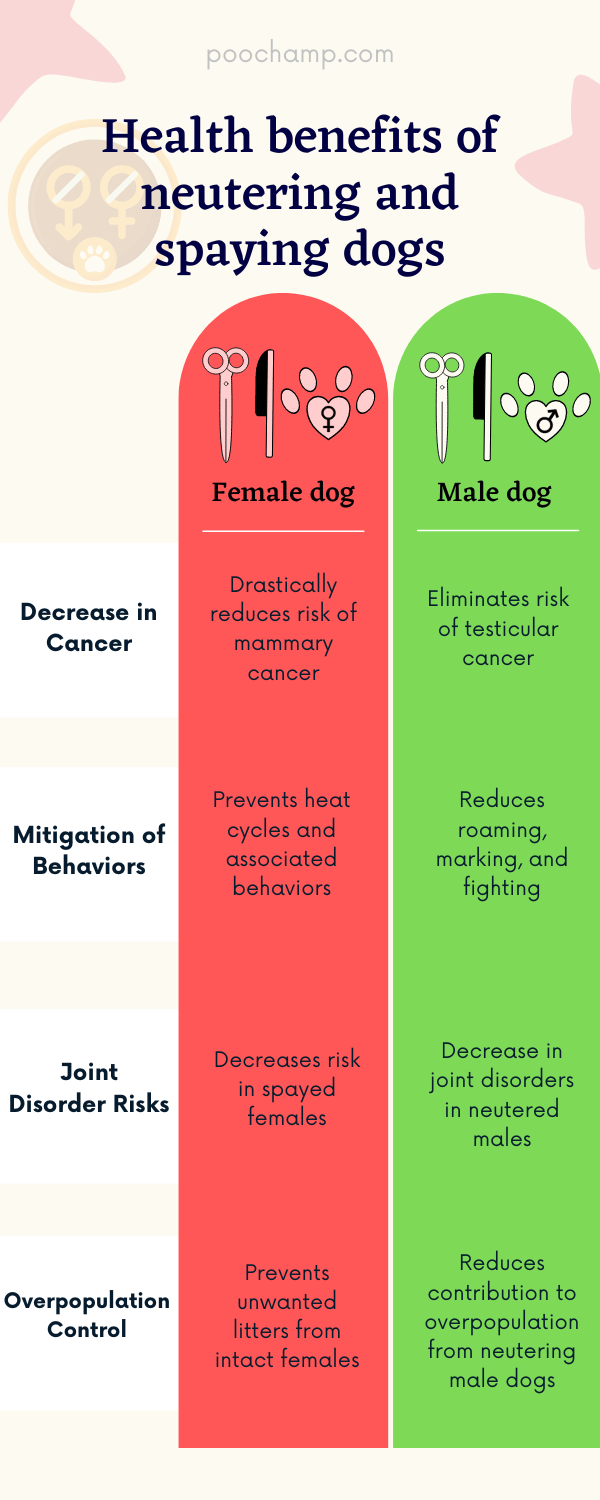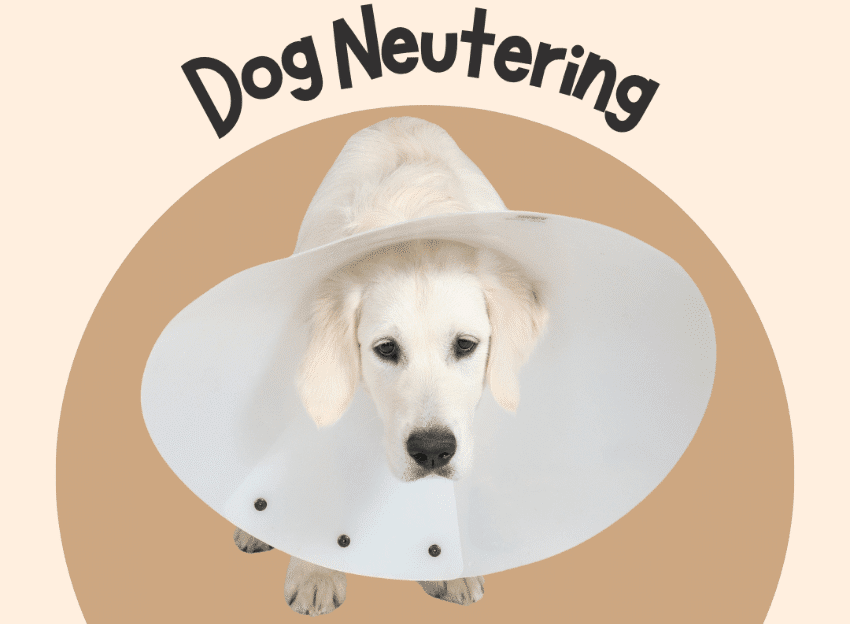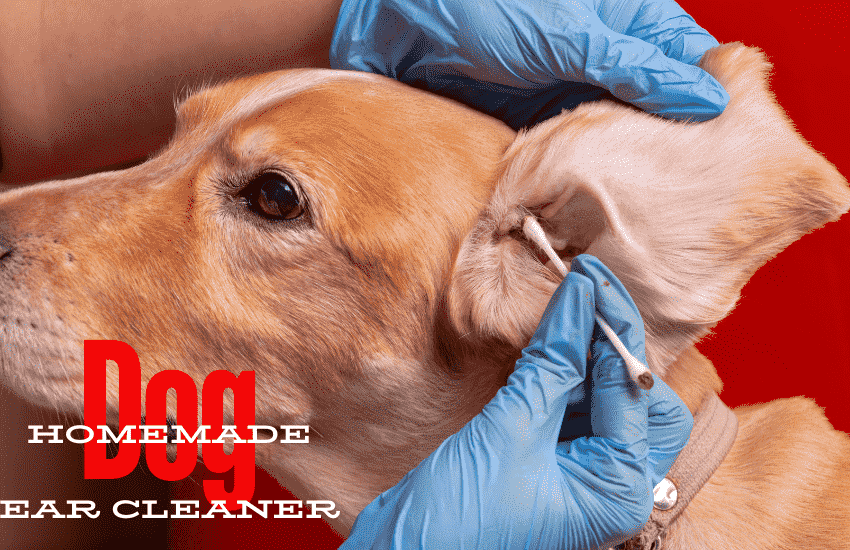Neutering, or the surgical removal of a dog’s reproductive organs, is a common practice among pet owners. It serves multiple purposes, including preventing unwanted litters and curbing certain behavioural traits. However, deciding when to neuter your dog is not a one-size-fits-all approach. Various factors come into play, and recent studies suggest that the timing of this procedure can impact your furry friend’s long-term health and well-being as it is important to know the signs your dog needs to be neutered
Understanding Neutering
Understanding neutering entails recognizing its significant role in mitigating the risk of various health issues and controlling the pet population. In the realm of veterinary medicine, neutering, which encompasses both spaying females and castrating males, is a cornerstone of responsible pet ownership. This surgical intervention not only helps in reducing the number of puppies and preventing unnecessary euthanasia but also significantly diminishes the health risks associated with reproductive organs.
For female dogs, spaying drastically reduces the risk of mammary cancer, a prevalent concern. For males, being neutered eliminates the risk of testicular cancer entirely.
Determining the best age to spay or neuter a dog is crucial and should be tailored to each individual, especially considering the breed. Large or giant breeds may benefit from a slightly delayed procedure to ensure their growth is not adversely affected. This approach underscores the importance of veterinary guidance to discern the appropriate age for neutering, aiming to maximize health benefits while mitigating risks.
So, neutering surgeries are more cost-effective in the long term, preventing potential health issues that could accrue significant expenses. Through an evidence-based, detailed understanding of neutering, pet owners are better equipped to make informed decisions, fostering a sense of belonging and responsibility within the pet community.
Signs your dog needs to be neutered
The Impact on Male Dogs
Signs of Sexual Maturity
For male dogs, signs of sexual maturity include behaviors such as lifting their leg to urine mark, humping, and overprotectiveness. While these behaviors can start at an early age, they often intensify as the dog continues to mature, typically until around 12 months or even later for larger breeds. During this growth period, male dogs also develop more muscle as their growth plates close. This maturation of their musculoskeletal system can play a crucial role in preventing certain orthopedic injuries later in life, especially for larger breeds.
Health Considerations
Research suggests that waiting until your male dog is a bit older before neutering may have health benefits, especially for larger dogs. Small dogs tend to have fewer orthopedic issues, so neutering them between 6-12 months is generally acceptable. However, for larger breeds prone to orthopedic problems, waiting until they reach 9-18 months of age may be more advisable. This delay allows their musculoskeletal system to mature fully and reduces the risk of certain cancers. On the flip side, male dogs that remain intact into adulthood may face issues such as prostate disease, perineal hernias, perianal tumors, and testicular tumors.
Considerations for Female Dogs
Signs of Sexual Maturity in Females
Female dogs also exhibit signs of sexual maturity, which may include behaviors similar to those in males, but they additionally go through their first heat (estrous) cycle. This phase can last up to two weeks, marked by bleeding, mood swings, and the unwelcome attention of male dogs from a considerable distance. Most female dogs experience their first heat around 9-10 months of age or even later, depending on their breed. Large breeds might not undergo their first heat until closer to or beyond 12 months of age.
Surgical Timing
It’s crucial to time spaying a female dog correctly due to the fragility of blood vessels and the risk of excessive bleeding when they are in heat. Spaying during this time is generally avoided unless it’s an emergency. Waiting for about a month after the heat cycle ends allows the blood vessels to stabilize, making spay surgery safer. However, after the first heat, the uterus and blood vessels undergo irreversible changes, making spaying more challenging. Spaying female dogs closer to maturity can reduce the risk of orthopedic issues, certain cancers, especially breast cancer, and urinary incontinence.
Tailoring the Timing
The American Veterinary Medical Association suggests a personalized approach to determine when to spay or neuter your dog. Rather than a standard “six months of age,” veterinarians should assess each individual case, taking into account breed, sex, and potential future health concerns. Purebred dog owners should also consult their breeders for valuable insights.
Ideal Neutering Age
Determining the ideal age for neutering a dog is a nuanced decision that must consider breed-specific and sex-specific factors to optimize health outcomes and prevent unwanted litters. The suggested guideline for neutering aims to balance the benefits of reducing the risk of cancers and preventing unwanted litters against the potential for increased joint disorders and other health concerns.
| Breed Size | Neuter Males | Spay Females |
| Small | 6 months | 4 months |
| Medium | Consult Vet | Consult Vet |
| Large | Consult Vet | Consult Vet |
This table outlines a basic framework for the ideal neutering age, emphasizing the importance of a tailored approach. For small breeds, neutering males and females before their first heat is recommended to mitigate the risk of testicular and mammary cancers, respectively. However, for medium to large breeds, the age of neutering without increasing guidelines that avoid exacerbating the risk of cancers and joint disorders requires a more individualized discussion with a veterinarian.
Adhering to these spaying and neutering guidelines ensures a responsible decision when you decide to neuter your dog, fostering a sense of belonging within the pet owner community committed to the well-being of their furry family members.
Breed Considerations
Breed and size significantly influence the optimal timing for spaying or neutering dogs, necessitating a tailored approach based on individual growth rates and health considerations.
Large or giant breeds, such as the German Shepherd Dog and Retrievers, often require a more extended period to reach full maturity compared to smaller breeds, such as the Cavalier King Charles. Therefore, it’s advised to wait until these larger breed dogs are at least 12-18 months old before spaying or neutering to ensure their growth plates have fully closed, reducing the risk of developmental orthopedic diseases.
Conversely, toy and smaller breeds, including the Cavalier King Charles and some small-sized golden retrievers, may be spayed or neutered at an earlier age, typically between six to nine months. This early intervention can significantly reduce the risk of mammary and other cancers.
Size and Growth Factors
Understanding the correlation between size, growth factors, and the timing of neutering is crucial for the optimal health of dogs. Given the diversity in breed sizes, a tailored approach, considering breed-specific growth rates and potential health implications, is recommended for determining the most appropriate age for spaying or neutering.
Research and professional guidance underscore the importance of taking into account the impact on growth, breed size considerations, and timing to enhance the well-being and longevity of our canine companions.
Impact on Growth
The impact of early spaying and neutering on a dog’s growth and size is a complex issue, influenced by the interplay of sex hormones and developmental stages.
Research highlights that early spaying or neutering, especially before reaching full maturity, can lead to an altered growth pattern due to the absence of sex hormones. This modification in growth can predispose some dogs to joint disorders, including hip dysplasia, and increased risks of debilitating conditions.
The appropriate neutering ages vary significantly across different breeds, with large or giant breeds requiring special consideration to avoid negatively impacting their growth.
A nuanced discussion with a veterinarian is crucial, assessing the individual dog’s breed, sex, and specific growth factors, to determine the optimal age for spay or neuter procedures, ensuring the well-being of intact males and females alike.
Breed Size Considerations
Given the nuanced impact of early spaying and neutering on growth, it becomes imperative to consider breed size and growth factors when determining the optimal timing for these procedures. Breed size considerations are crucial, as different breeds and sizes of dogs mature at varying rates.
Research indicates that early spaying or neutering, particularly in large and giant breeds of dogs, age was associated with an increased risk in joint disorders. This underscores the importance of tailoring the timing to each individual dog, factoring in the potential occurrences of joint disorders.
For instance, toy breeds may be safely spayed or neutered at six to nine months, whereas larger breeds often benefit from waiting until 12-18 months. Consulting with a breeder can offer additional, breed-specific insights, ensuring the well-being of the dog is prioritized.
Timing for Optimal Health
Considering the diverse rates at which different breeds and sizes of dogs reach maturity, determining the optimal timing for spaying or neutering demands a nuanced approach that weighs both the potential health benefits and risks.
- Large breeds may benefit from delaying spay/neuter until after the first year to minimize disease risk, including joint disorders or cancers.
- Spaying females was associated with a reduced incidence of mammary cancer, especially if done before the first heat cycle.
- An evident increased risk of certain health issues, including a significant increase in cancers, has been observed in some breeds with early neutering.
- Consulting with breeders and veterinarians helps tailor the decision on the timing for optimal health, considering breed-specific concerns.
- Studies indicate varying percentages of males neutered at different ages, reflecting the nuanced approach owners and vets take to neuter should decide based on individual dog factors.
Health Benefits of dog neutering
Spaying and neutering pets offer substantial health benefits, including significantly reducing the risk of certain cancers and mitigating behaviors that contribute to pet overpopulation. Veterinary Medical experts advocate for these procedures not only to prevent unwanted litters but also to safeguard the health and well-being of our furry companions. By choosing to spay or neuter, pet owners can play a pivotal role in enhancing the quality of life for their pets.
| Health Benefit | Effect on Females | Effect on Males |
| Decrease in Cancer | Drastically reduces risk of mammary cancer | Eliminates risk of testicular cancer |
| Mitigation of Behaviors | Prevents heat cycles and associated behaviors | Reduces roaming, marking, and fighting |
| Joint Disorder Risks | Decreases risk in spayed females | Decrease in joint disorders in neutered males |
| Overpopulation Control | Prevents unwanted litters from intact females | Reduces contribution to overpopulation from neutering male dogs |
The decision to neuter not only impacts the immediate health by reducing risks of joint disorders and cancers in neutered males and spayed females but also contributes to a larger communal effort in controlling pet populations. Engaging in this practice reflects a commitment to the welfare of pets, embodying the very essence of responsible pet ownership.
Behavioral Impacts
Delving into the behavioral impacts, it’s evident that early spaying and neutering can profoundly influence a dog’s temperament and social interactions. While the primary purpose of these procedures is population control and the prevention of unwanted litters, the behavioral implications are significant and merit careful consideration by those wishing to neuter their pets.
- Reduction in Aggression: Neutering male dogs may lead to a decrease in aggressive behaviors towards other males, as well as territorial and mating-related aggression.
- Decreased Roaming: Both neutered males and spayed females are less likely to roam, reducing the risk of injury, loss, and unwanted mating.
- Mitigated Sexual Behaviors: Neutering can reduce or eliminate behaviors such as mounting, marking indoors, and the desire to seek out females in heat.
- Influence on Socialization: Spaying and neutering may impact how dogs interact with both humans and other dogs, potentially making them more amiable and less prone to dominance-related behaviors.
- Consideration of Timing: Deciding on the appropriate time to spay or neuter should take into account the dog’s breed, size, and the potential for behavioral changes post-surgery, especially if performed before reaching the first heat cycle in females or full maturity in males.
Veterinarians are essential in guiding pet owners through the decision-making process, ensuring that the timing aligns with the dog’s health and behavioral development.

Preparing for Surgery
As pet owners prepare for their dog’s neutering surgery, understanding pre-surgery dietary instructions and post-operative care essentials is crucial for a smooth procedure and recovery.
A veterinarian will provide specific guidelines on fasting times and dietary restrictions prior to surgery to minimize risks during anesthesia.
Additionally, discussing post-operative care, including pain management, activity restrictions, and wound care, ensures owners are well-equipped to support their dog’s healing process.
Pre-Surgery Dietary Instructions
Preparing your dog for surgery involves following specific dietary guidelines set by the veterinarian to ensure optimal readiness for the procedure. Adherence to these pre-surgery dietary instructions is crucial for minimizing the risk of complications and optimizing the outcomes for neutered males and females. The guidelines are informed by a comprehensive review of body condition scores, clinical signs, and disorders associated with neutering, all documented within the veterinary hospital database and supported by research from the School of Veterinary.
- Follow the veterinarian’s specific dietary guidelines.
- Avoid feeding any food or treats after midnight the night before surgery.
- Provide access to water until the morning of surgery, with specific instructions from the veterinarian.
- Consult the veterinarian about dietary restrictions leading up to surgery.
- Inform the veterinarian about any medications or supplements, as these may impact dietary instructions.
Post-Operative Care Essentials
Understanding the essentials of post-operative care is critical for ensuring a smooth and efficient recovery process following the neutering surgery. This care begins with a thorough consultation between pet owners and veterinarians, weighing the individual risks and benefits of the procedure.
The present study emphasizes that the timing for neutering, especially for specific breeds and sizes, should be meticulously considered, aiming for the optimal window—possibly within the first six months of age for some, while delaying until 12-18 months for others. Data collection and analyses within this study population underscore the importance of tailoring surgical decisions to each dog’s unique needs.
Post-Operative Care
Following a dog’s neutering procedure, post-operative care is crucial to ensure a smooth and safe recovery, encompassing vigilant monitoring of the incision site and adherence to prescribed treatments. This phase is pivotal, not only for the immediate wellbeing of the dog but also for its long-term health outcomes. Previous studies have highlighted the significance of meticulous post-operative care in reducing complications, which can be particularly prevalent among intact males and intact females if not managed appropriately.
For those committed to ensuring the best possible recovery for their dogs seen after neutering, consider these key guidelines:
- Monitor the incision site for signs of redness, swelling, discharge, or excessive licking.
- Ensure the dog wears an Elizabethan collar to prevent interference with the surgery site.
- Limit physical activity and follow the veterinarian’s instructions on resuming normal activities.
- Administer prescribed pain medication or antibiotics as directed.
- Provide a comfortable, quiet space for rest and recovery.
These measures are not only about adhering to professional advice but also about nurturing a sense of belonging and care for our canine companions. It has been reported with significance level that adhering to these post-operative care guidelines can drastically reduce the percent of intact males and intact females who were diagnosed with post-surgical complications, underscoring the importance of this phase in the neutering process.
Alternatives to dog Neutering
While post-operative care plays a critical role in the recovery process after neutering, exploring alternatives to this surgical procedure presents a range of options for managing a dog’s reproductive health with potentially fewer long-term hormonal impacts. These alternatives aim to address concerns related to the risks of neutering, such as the significant occurrence of increased joint disorders and cancers in certain breeds.
By considering hormone-sparing surgeries, vasectomy, ovary-sparing spay, or even monitoring and management, owners have the opportunity to make informed decisions that reflect both the well-being of their pets and breed-specific considerations.
| Alternative | Benefits | Considerations |
| Hormone-sparing surgery | Preserves hormone production | May not eliminate all reproductive risks |
| Vasectomy | Prevents pregnancy, maintains hormones | Not suitable for all breeds |
| Ovary-sparing spay | Keeps hormonal balance, prevents pregnancy | Requires careful monitoring |
These alternatives to neutering, including delaying neutering, offer avenues for owners of intact males and females to navigate the complex landscape of reproductive health. By weighing the benefits against the risks of neutering, such as the occurrence of joint disorders and cancers, pet owners can foster a sense of belonging and ensure the well-being of their canine companions.
Risks and Complications of dog neutering
While many pet owners recognize the benefits of neutering their dogs for behavioral and population control reasons, it is crucial to also consider the associated risks and potential complications that may arise from these surgical procedures.
Early spaying and neutering have been linked to increased risks of joint disorders and certain cancers, including mast cell tumors. The sex hormones that are removed through these procedures play a vital role in the development and overall health of dogs, affecting various systems.
Veterinarians, therefore, must employ their professional judgment on a case-by-case basis, particularly with large or giant breeds, to weigh the risks and benefits of spaying/neutering. The timing of these procedures should be carefully tailored to each individual dog, considering factors such as breed, size, and potential future medical concerns. This approach ensures that the decision to spay or neuter is made with the dog’s best interests in mind.
Frequently Asked Questions
What Is the Best Age to Neuter a Male Dog?
The optimal age for neutering a male dog varies, incorporating breed considerations, veterinarian advice, and an understanding of hormonal impact. Factors such as behavioral changes, health benefits, and longevity effects should guide pre- and post-surgery care decisions.
Is It Better to Neuter a Dog Early or Later?
Deciding whether to neuter a dog early or later involves evaluating hormonal impact, behavior modification, and health benefits, including risk reduction and weight management. Breed considerations and potential for longevity increase should guide this critical decision.
Why Wait a Year to Neuter a Male Dog?
Waiting a year to neuter a male dog considers joint health concerns, breed size, and hormonal balance, aiming to mitigate risks of cancers and improve weight management, social behavior, aggression control, and potentially longevity.
What Are the Signs That a Male Dog Needs to Be Neutered?
Signs indicating the need for neutering a male dog include aggressive behavior, territory marking, unwanted mounting, and escaping attempts. Neutering offers health benefits, hormonal balance, behavior modification, and longevity increase, while reducing risks and aiding population control.
Can A neutered male dog still get a female pregnant?
No, according to the American Veterinary Medical Association (AVMA), a neutered male dog cannot impregnate a female dog. Neutering involves the removal of the testicles, which are responsible for producing sperm. Without testicles, a neutered male dog is unable to breed and reproduce. Neutering is a permanent form of contraception for male dogs.
when can a female dog be spayed after having puppies?
It is recommended to wait until the puppies are weaned before spaying the mother dog. This is typically around 8 weeks after the puppies are born. It is important to consult with your veterinarian to determine the best time for spaying based on the mother dog’s health and recovery after giving birth.
how long after neutering dog is testosterone gone?
It typically takes a few weeks for testosterone levels to decrease significantly after neutering a male dog. However, it may take up to a few months for all residual testosterone to leave the body completely. The effects of neutering on behavior and other aspects of health may vary depending on the individual dog. It is best to consult with your veterinarian for more specific information about your dog’s recovery after neutering.
So, the decision regarding the optimal timing for neutering a dog necessitates a multifaceted approach, taking into account breed, size, and individual health considerations. Research indicates that the risk of joint disorders may increase by as much as 17% in dogs neutered early, underscoring the importance of tailored veterinary advice. A comprehensive evaluation by a veterinary professional remains paramount in balancing the health benefits and risks, ensuring the welfare and longevity of the canine companion.







